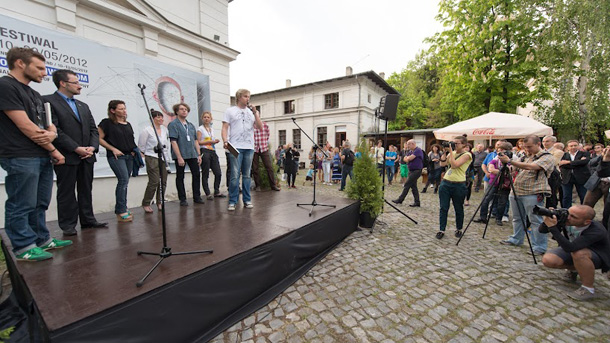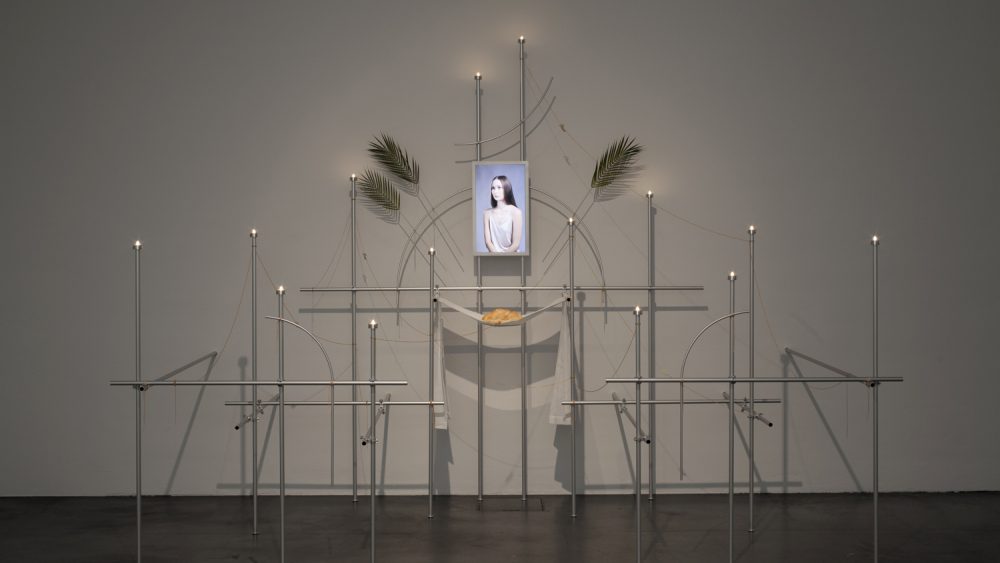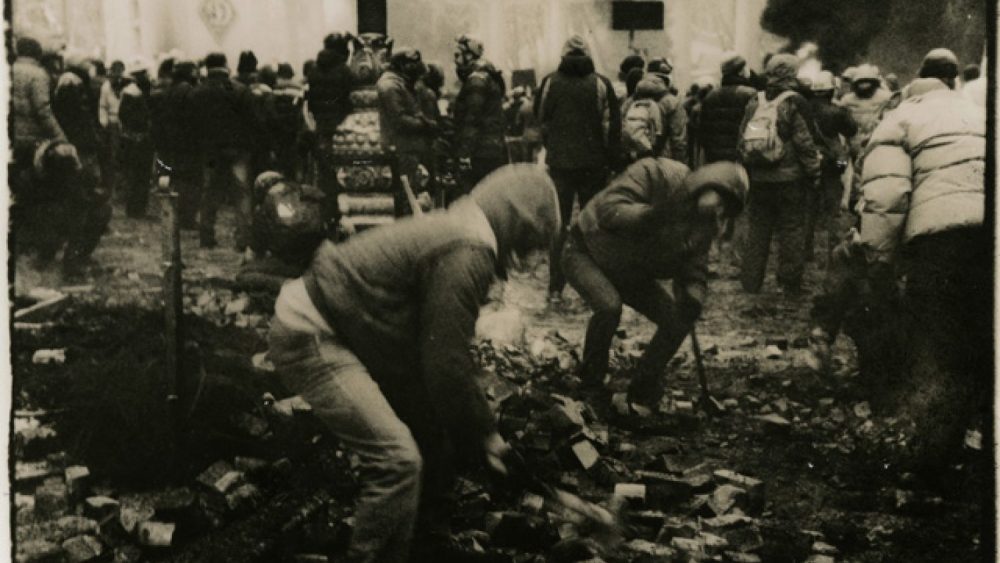Interview with Marta Szymanska
Marta Szymanska (1980) is the Programme Director of Photography Festival in Lodz. The festival, which for the first time opened its doors in 2001, has grown over the last years and considers the establishment of exchange space for photographers and photo enthusiasts the biggest ambition. In the Grand Prix competition organised in the framework of the festival any photographer can participate. Marta visited Latvia to take part in portfolio review jury of the International Summer School of Photography (ISSP) and to tell the audience about the festival.
How did the idea to create the festival originate and what was the situation in the field at the time?
It started in 2001 and it was organized at the time by the students of sociology. In the beginning the festival had more social background. It was smaller and rather local for the first two, three years. Then the festival became more international and started to develop. I wasn’t part of the group back in that time yet (I joined in 2005), coming to a certain structure which we continued to develop together. The idea came from the Festival of Arles (Les Rencontres d’Arles). It was ambitious to want to create something similar in Poland, but it’s good to have high ambitions, I guess. At that time, there was no international festival in Poland, so we started. The idea was to present international photography to Polish audience. It was very different back in 2001 – the photography and the way to organize a cultural event have changed. The public is more and more demanding and there are more festivals. People are used to seeing the culture through these kinds of events which wasn’t the case in 2001, for example. It changes the demands and needs of people.
Was the Festival of Arles your example?
I think it was an example for everybody. Later on, our example was also Bratislava because it was close (the Month of Photography Bratislava). We were looking for something special. What we always appreciated in the Arles Festival and what we wanted to incorporate in our festival was the social atmosphere, and by that I mean, to create a festival as a place of meeting, where people come to be together, to exchange the experience, to share the ideas. This is the inspiration we got from Arles. I hope that we will succeed.
Is that the essence of your festival?
Now the essence of the festival is definitely to create a meeting place. I think it’s necessary now and people appreciate it. People want to meet, to exchange their knowledge and experience in life, not only virtually.
What are you doing to achieve it?
First, we organise the exhibitions, of course. Every year we have one curatorial exhibition, based on a topic. Then we choose the curators and work together on the topic. The last year we also started the discussion tradition – we invite artists for talks, we organize a discussion about the topic. We also try to make the exhibitions as much up-to-day as possible. In 2012, one of the exhibitions was entitled Picturing the Difference which was based on the social project and the exhibition showed how the artists can be involved in the society or how the photography can present some social problems. The other part of the festival is the Grand Prix contest. Every year between September and November we start an open call and we get at least 600 applications and we choose one winner and about 10 – 11 other artists who are exhibited. Unfortunately, now, because of the space problem, we are no longer able to exhibit them but we show the works as a projection. Another part is an educational programme which consists of portfolio review, workshops, master-classes. We try to organize something for everybody, on different levels – for advanced photographers, for children or a workshop on wedding photography. The public really likes the photo walk – we take people for a walk through the city; it is usually led by a guide who talks about the history of the place and a photographer who gives an advice how to photograph this place in an interesting and good way. Usually two to three hundred people come. Another important part is accompanying exhibitions. The programme is always realized with collaboration of the galleries and museums, it’s important to involve other curators from the city to show other points of view. It also gives us a different group of viewers. Moreover, it provides the foreigners to see the different places in the city, not only the festival centre. And it’s important for us because these institutions are seriously involved and always prepared ahead.
Who subsidizes the festival?
We are mostly financed by the city and the Ministry of Culture but we also work with the sponsors. This year we, for example, had a very uncommon sponsor – a company that deals with clothes design. We did a huge fashion session for them and it was presented at the festival. Working with the sponsors has been changed a lot since 2005 when we started. And it was easier back then, as the sponsors were not so demanding as they are now.
What are your responsibilities?
I’m mostly responsible for the programme but also for the whole organization. We are now three people who work on the festival – one person is responsible for writing grants and other official documentation, and me with another person account for the contents. Later on, we start to work with other people for the promotion. I create the programme and work with the curators, I draft the budget. Depending on the year, we also share the duties.

What is your professional background?
I studied Polish literature and grammar and I did post-graduate studies mostly about social issues in art and democracy in art. I started to work as an editor of books and catalogues and then step by step I got involved with photography and I am where I am now.
The photography medium is really popular. How do you manage not to miss the photographers we should see? How do you choose the photographers for the festival?
We are, of course, missing many things, it’s impossible to show everything but there are so many festivals that someone is probably presenting it elsewhere. As for the choices, once we have found the theme of the festival, we look for the curators. Last year the topic was network, the next year we will be showing the theme everybody’s an artist, so it will be about the democratizing of the photography and then, the year after, I think we will work on the books. We travel a lot, talk to people, we are interested as much in people as in photography. There has always been more of documentary and humanist photography than conceptual but it doesn’t mean that we don’t present it. The important thing is to create a place for people and to give them a motivation and inspiration to discuss.
How do you differ from other festivals in Poland?
The festival in Krakow is quite similar to ours. The festival in Warsaw is more focused on artistic photography and is rather local. In Bielsko-Biala they are more focused on individual exhibitions and the exhibitions outdoors. There is also a festival in Poznan which is a biennale and also more devoted to Polish photography. This is a good question because most of the festivals are unfortunately similar. We try to differ not only with the photography that we show but, as I mentioned before, with creating a meeting place.
As a culture tourist, which festival do you like to visit the most?
I really like Braga Photography festival in Portugal, also Arles festival for its atmosphere.
What are your rewards and discoveries since you work for the festival?
There are many but the latest discoveries would be two Polish photographers – Piotr Zbierski, he has finished the Photography Department at the Lodz Film School and he won the Leica Oskar Barnack Newcomer Award 2012. The second one is Tomasz Lazar who won the Grand Prix in 2012 and also the second place in the World Press Photo 2012 in category People in the News. The most rewarding thing is when the people are coming to the festival, when I can talk to people who take part in the festival. When I, for example, go to the portfolio review and I see the blink in the eyes of people who have discovered something, when I see people thinking or crying during the exhibition, those are the most rewarding moments.
What is the photography situation in Poland?
It’s a very popular medium. Around 2007 – 2008, a very strong tendency was documentary photography. Afterwards people got bored, they were more interested in very personal essays. Now it’s very hard to say because there are so many people working with the photography medium. There are more and more collectives of photographers appearing and people are more interested in self-publishing. I don’t think that tendencies are a lot more different of what we see here, in Latvia or in Germany, for example. The groups that people create to exchange was one of the reasons why we decided to choose networking as a topic for the festival. This tendency is very strong. There is a wonderful collective of documentary photographers Sputnik which is a good example of collaboration. The photography life is more focused on the festivals – we have four – than on the galleries which we don’t have many. The photographic press is in a very bad situation in Poland. We only have one magazine devoted to photography now but I guess it’s a global tendency that the magazines become rather internet based than printed.
What about the education in photography?
There is one good school in Lodz, the Film School with a Photography Department. Also, all art academies have photography departments and now they are creating the departments, dividing in more specialized forms of photography and giving more possibilities for the students at the beginning. Most of the public departments in photography belong to the Art Academy. There is no public school, devoted only to photography. It influences people because the students have to work with different mediums. The situation is quite good with private academies. There are not so many events as workshops or summer schools, as the Latvian ISSP but more and more people start coming to Poland to give classes.



